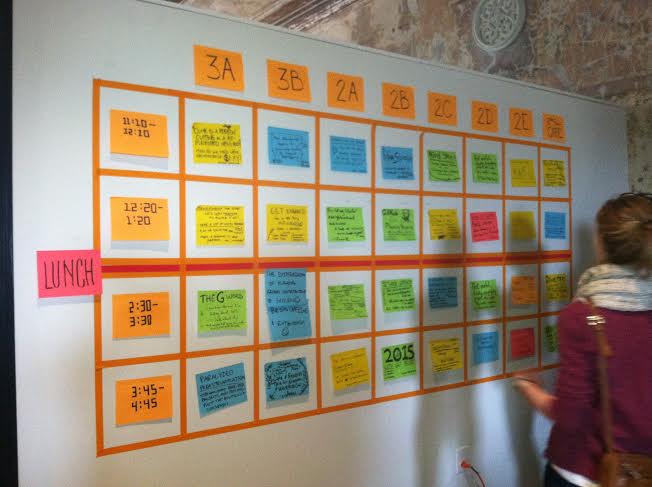What do you get when you mix urban planners, architects and community organizers with technologists searching for the best uses of big data, GIS and the web in civic life?
At ImpactHub, host to the third of five PlanningCamp unconferences curated nationwide by open gov advocacy nonprofit Open Plans, the answer was naturally left up to its participants, who convened across 30 sessions exploring how to improve and scale public engagement in design projects, how to convince local government to govern with data rather than emotion and even how to use food waste to feed the poor. You know the unconference model: a general event theme and an open schedule, which attendees fill up during the event with the discussions they want to have and lead.
In gathering the digital savvy and urbanists from across the East Coast, OpenPlans had its target audience on hand to demo and receive feedback on Plan in a Box, a tool supported by a $620k Knight Foundation grant that makes it easy for planners to build websites that share information on planning projects and elicit input from the public.
“Good software needs to be informed by those doing the job in the real world,” said newly appointed OpenPlans CTO Aaron Ogle, whose product’s interface was influenced by working with civic organizations like NYC DOT on WordPress and probing for pain points. (Ogle is a former Azavea developer and one of the original Code for America fellows who has built something a national reputation from his Philadelphia area home.)
Open Plans director Frank Hebbert unveiled a basic version of the product at planinabox.org — initially targeted for use in street development projects but anticipated to expand — featuring a user-friendly template planners spanning the spectrum of technical literacy can use to create websites detailing the location, current status, contact information and timeline of a project.
To attendees struggling to determine where Plan in a Box would fit into their already cluttered online lives, Hebbert replied that the product uses structured data, making it easy for machines to read and re-publish content on a user’s partner sites across the net.
“This is about more than making PDFs into webpages. It’s about making planning user-centric,” said Hebert, who demonstrated Plan in a Box’s aim to disseminate planning information in the social media and physical worlds. Upon publishing the static page, planners are given a URL to post to social media and newsletters, while users can print out PDFs of the information to update the public offline on progress at the project’s site.
“We learned more about how planners communicate,” said Hebbert.
Here is a peak inside the doors of a few more sessions at PlanningCamp:
- At the session on ‘how to convince council to govern with data over emotion,’ led by the Planning Commission’s Mark Wheeler, several attendees agreed the most effective way to get the attention of council is to upend the structure and educate the voters, emphasizing the importance of getting data into the hands of advocates, journalists and graphic designers, who can tell a clear story.
But Wheeler cautioned that data can still be misinterpreted, positing the development of interactive data programs that would display error messages when read incorrectly.
- A session called the “G(entrification) Word” stressed that planners should understand community fear of change and intervene to provide reliable information to residents at the grassroots.
- A group of students from Rutgers explored how to network wasted food from restaurants and markets and get it in the hands of the homeless.







